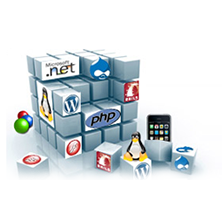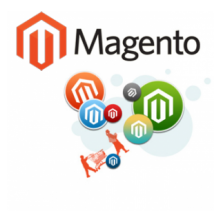In the beginning, enterprise applications were built simply to present business information to customers. But now, with the extraordinary explosion of information, and new delivery models, business applications serve as the heart of IT strategy. Customers expect a personalized experience, and instant information whenever they need it, wherever they are.
This change in customer needs forces businesses to come up with new ways of rapidly building, deploying and managing their applications in order to reach more prospects. They must now provide users with an enjoyable experience in order to gain and retain their business. Technical disruption has left wide open gaps between legacy and successful applications of today. Because of this, developing an application has become more interesting and challenging as time goes on.
We’d share with three major trends to help you decrease development time, increase overall business ROI, and provide exceptional customer experience to your users. Keep them in mind while building your next enterprise application.
1. Research Customer Needs – Mobile First:
Customer expectations are higher than ever before.From functionality, to content, and personalization, customers increasingly expect a personal relationship with a brand. It’s important to truly understand your customer requirements before development begins.
The key to successful modern business is exceeding expectations in individual experience. Priority must be placed on building consistent, personalized content.Additionally, customers are looking for information that is easily accessible and easy to use on any device whenever, wherever it’s required.
2. Consider the Cloud:
Cloud computing has shaken things up like never before, and companies are aggressively adopting cloud-based deployment into their IT strategy. Cloud adoption, especially SaaS application, allows companies to have the flexibility to achieve massive scalability as they need it.without having to invest in considerable infrastructure.
“According to a study by IDC, worldwide spending on public IT cloud services will reach £30 billion (more than $40 billon) this year and is set to more than double to reach £67 billion (about $91 billion) by 2017.”
The cloud provides flexibility, scalability, faster processing speeds, and innovative technology to capture and analyze customer data for making profit-oriented decisions.
3. Make Your App Predictive:
Wouldn’t it be great to know exactly what your customers want, and to be able to build something to serve them better based on that knowledge?. The ability to do this is something Forrester calls a predictive app. Forrester defines predictive apps as:
“Apps that leverage big data and predictive analytics to anticipate and provide the right functionality and content on the right device at the right time for the right person by continuously learning about them.”
Building this type of app requires new architecture and a new approach to business that fits well with ‘customer anticipation.’ Here, big data and predictive analytics will play a big role to provide the right information at the right time.
After you consider all these tips, make sure to consider, integrity, security, reliability, and efficiency across different channels, as more important attributes that will continue to play an important role in application delivery.
2014 is going to be exciting for cloud computing, virtualization and the explosion of mobile business . If you want to continue this conversation, please share your thoughts with us in the comment section.

Balaji has spent over 18 years in the IT Services Industry. With an experience encompassing Services and Product Marketing, he has successfully managed globally distributed Marketing and Product teams. He’s an analytical marketer with strong understanding and experience across marketing strategy, demand generation, field marketing, technology partner marketing, account based marketing, digital marketing, event management, analysis and third party relationship, PR/Media, people management, etc.






